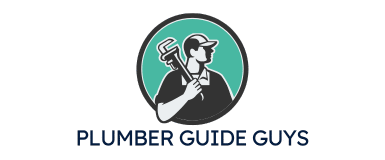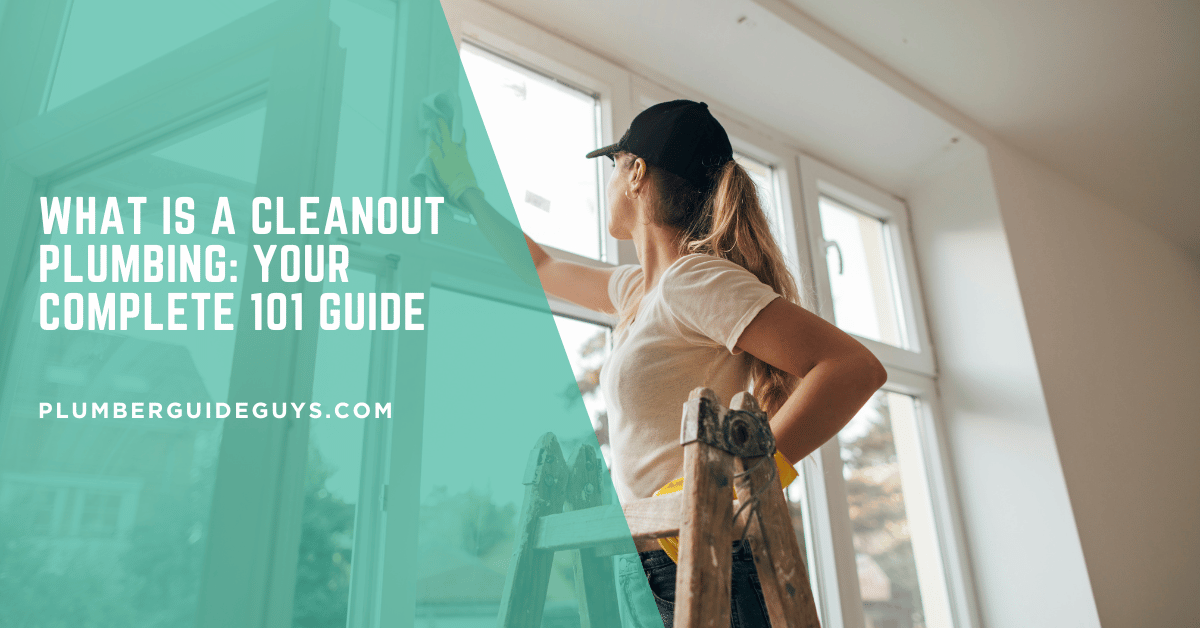Affiliate Disclosure
Plumber Guide Guys is a participant in the Amazon Services LLC Associates Program, an affiliate advertising program designed to provide a means for sites to earn advertising fees by advertising and linking to Amazon.
What Is a Cleanout Plumbing? Ever wondered how plumbers clear tough pipe blockages without damaging your walls? They use plumbing cleanouts, a clever access point. It makes fixing pipes easy.
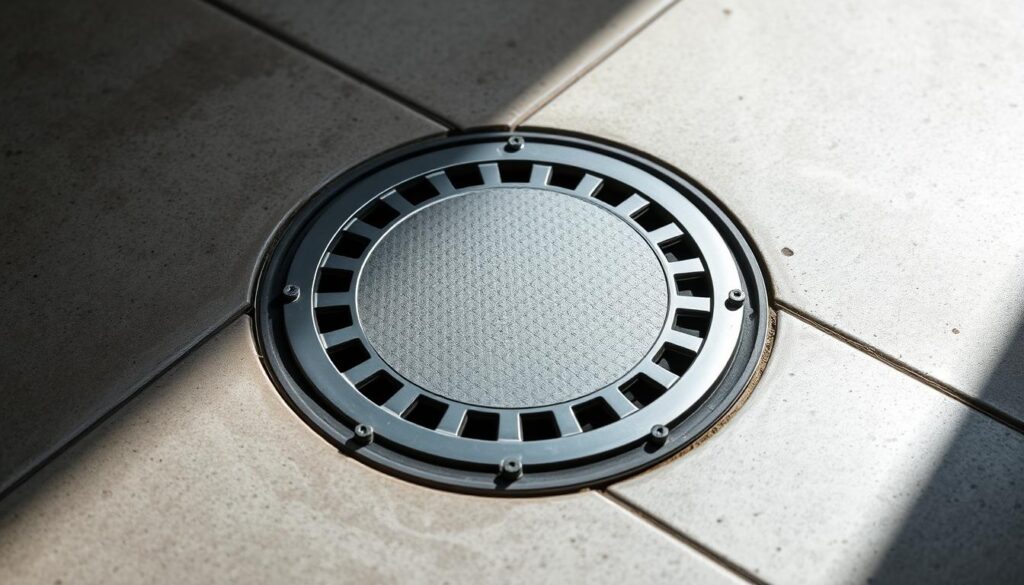
Cleanout plumbing systems are key in homes and businesses. They let experts and homeowners check, clean, and fix pipe problems easily. This saves time and trouble.
Think of a cleanout as a special door into your plumbing system. It makes fixing drainage issues simple. This guide will explain what a cleanout plumbing is and why it’s important.
Key Takeaways
- Cleanouts provide direct access to plumbing systems
- Essential for diagnosing and resolving pipe blockages
- Reduces damage during maintenance
- Available in various configurations for different needs
- Important for both homes and businesses
Table of Contents
What Is a Cleanout Plumbing
Plumbing cleanouts are key parts of your home’s drainage system. They give plumbers and homeowners easy access to pipes. This helps fix blockages without digging up your yard.
Learning about cleanout plumbing can save you a lot of time and money. Drain cleanout locations are placed for easy access and less disruption.
Purpose and Function
The main job of a cleanout is to let you get into your plumbing system. It helps with:
- Removing tough pipe blockages
- Doing detailed pipe checks
- Keeping pipes in good shape
- Stopping sewer line problems
Types of Cleanouts
There are different cleanouts for various needs in your plumbing:
- Floor Cleanouts: Found at ground level, usually in basements or utility rooms
- Wall Cleanouts: On vertical pipes for easy reach
- Stack Cleanouts: On vertical waste stacks for managing vertical flow
Importance in Plumbing Systems
A sewer cleanout cap is vital for your drainage system. It keeps out debris, gases, and contaminants. It also seals the access for maintenance.
Good cleanout care can make your home’s plumbing last longer.
Understanding Cleanout Locations in Your Home
It’s important to know where cleanouts are in your home for good plumbing care. Main line cleanouts need to be placed right to make maintenance easy and effective. These spots are key for checking and fixing blockages in your plumbing.
- Near the main sewer line connection
- Basement or crawl spaces
- Exterior foundation walls
- Under kitchen and bathroom sinks
- Along horizontal pipe runs
Plumbers put cleanouts in the best spots to make maintenance easy. The main line cleanout installation process considers many things. This includes the pipe layout, the building’s design, and where blockages might happen.
| Location | Purpose | Accessibility |
|---|---|---|
| Exterior Foundation | Primary sewer line access | High |
| Basement | Internal drainage inspection | Medium |
| Kitchen/Bathroom | Fixture-specific drainage | Low |
Knowing where these spots are helps homeowners find where to do maintenance. It also helps them talk better with plumbers when they need help.
Essential Components of Plumbing Cleanouts
Plumbing cleanouts are key to accessing and maintaining your home’s drainage. Knowing their parts helps you tackle plumbing problems and avoid expensive fixes.
Cleanout systems have several important parts. They work together to make it easy to access and maintain your plumbing.
Cleanout Plugs and Caps
Cleanout plugs and caps protect your plumbing access points. They are vital when you learn to use plumbing cleanouts. They help:
- Keep debris out of drain lines
- Stop sewer gases from getting out
- Securely close access points
Access Points and Fittings
Access points and fittings do more than just open up your plumbing. They let plumbers and homeowners check, clean, and clear blockages in drainage systems.
| Component | Function | Location |
|---|---|---|
| Main Cleanout | Primary drainage system access | Near building foundation |
| Lateral Cleanout | Branch line inspection | Underground pipe connections |
| Vent Cleanout | Plumbing vent system access | Roof or exterior wall |
Materials Used in Cleanout Construction
Modern cleanout systems use different materials for durability and to fit various plumbing setups:
- Stainless Steel: Resists corrosion and lasts long
- PVC: Light and affordable
- Brass: Strong and good for high-pressure systems
- Cast Iron: Classic material with great strength
Knowing about these parts helps you manage your home’s plumbing better. It lets you solve problems before they get big.
Building Code Requirements for Cleanouts
Knowing what cleanout pipe requirements are is key to a safe and working plumbing system. Local building codes give clear rules. These rules make sure your plumbing is up to standard and safe.
Plumbing codes set important rules for cleanouts. They cover a few main points:
- Minimum pipe diameter specifications
- Exact placement locations
- How often cleanouts should be installed
- What materials are okay to use
The main reason for these rules is to keep your home’s drainage system safe. Even though different places might have their own codes, they all share the same basic ideas.
| Code Requirement | Standard Specification |
|---|---|
| Minimum Cleanout Size | 4 inches for main sewer lines |
| Placement Intervals | Every 50 feet of horizontal piping |
| Accessible Location | Within 10 feet of building exit point |
| Material Compliance | PVC or Cast Iron approved materials |
Professional tip: Always check with your local building department to see what cleanout pipe requirements are in your area. Rules can change from place to place.
Following these codes is more than just following rules. It’s about making sure your plumbing works well, safely, and without problems.
Installation Guidelines and Best Practices
Installing a basement cleanout valve needs precision and planning. It ensures your plumbing works well and avoids drainage problems. Plumbers suggest following certain steps for the best results and lasting performance.
Before installing a basement cleanout valve, consider a few key points:
- Precise location selection
- Appropriate pipe measurements
- Proper support and anchoring techniques
- Compliance with local building codes
Proper Placement Techniques
Choosing the right spot for your basement cleanout valve is important. It should be easy to reach and strategically placed in your plumbing system. Usually, it’s best at points where pipes change direction or at the start of vertical lines.
Installation Tools and Equipment
To install a basement cleanout valve, you’ll need these tools:
- Pipe wrench
- Level
- Measuring tape
- Pipe cutting tools
- Sealant and primer
Safety Considerations
Always put safety first when installing. Wear safety glasses and gloves. Shut off the water supply before starting and make sure your area is well-ventilated. If unsure, it’s best to get help from a professional plumber.
Professional tip: Proper pipe support prevents future drainage problems and extends the lifespan of your plumbing system.
Maintaining Your Plumbing Cleanouts
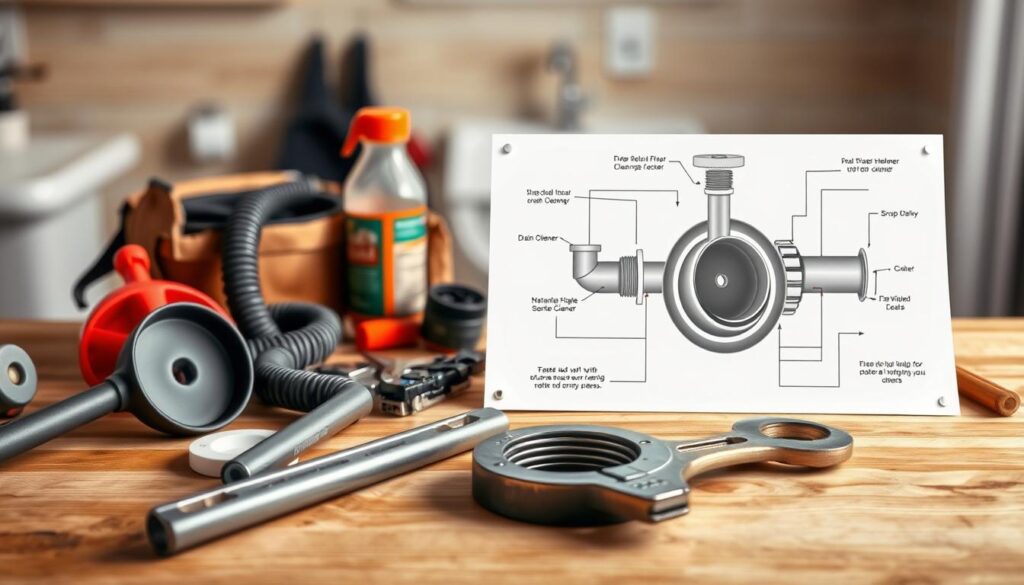
Keeping your plumbing cleanout in good shape is key to a smooth home drainage system. A well-kept cleanout can save you from expensive fixes and sudden plumbing issues. Knowing how to care for your cleanout can save you time and money.
Regular upkeep includes several important steps to keep your cleanouts working right:
- Inspect cleanout plugs and access points at least twice a year
- Check for visible signs of wear, corrosion, or damage
- Ensure cleanout caps are securely fastened
- Look for possible leaks or moisture around the cleanout area
Cleaning your plumbing cleanout needs some care. Avoid using harsh chemical cleaners that could harm the pipes or seals. Instead, think about getting professional cleaning services for a detailed check. They can use special tools to clear out buildup and stop blockages.
Signs that your cleanout needs quick attention include:
- Unusual odors near drainage areas
- Slow drainage in multiple fixtures
- Visible sewage backup
- Unexplained water pooling around cleanout areas
Professional plumbers suggest annual inspections to catch issues early.
By being proactive with your plumbing cleanouts, you’ll protect your home’s drainage system. This way, you’ll avoid costly and unexpected repairs.
Signs You Need to Access Your Cleanout
Knowing when to use your drain cleanout can prevent big plumbing problems. Homeowners should watch for certain signs that mean it’s time to check your sewer system.
Drainage Problems to Watch For
Look out for these important signs that might mean you need to check your sewer cleanout cap:
- Multiple drains clogging at once
- Gurgling sounds from toilets or sinks
- Water backing up in places it shouldn’t
- Slow drainage in different parts of your home
Serious Sewer Line Indicators
Some signs need quick action from a professional. Watch out for these red flags:
| Warning Sign | Potential Severity |
|---|---|
| Persistent sewer odors | High |
| Unexplained wet patches in yard | Critical |
| Foundation cracks near sewer lines | Extreme |
Emergency Situations
Some situations need you to act fast. Sewage backup, significant water damage, or complete drainage system failure are times to quickly find and use your drain cleanout.
“Early detection prevents costly repairs and possible health hazards.” – Professional Plumbing Association
Knowing where your drain cleanout is and how to safely remove the cap is key for handling plumbing emergencies.
Professional vs DIY Cleanout Access
Homeowners often face a big choice: do it themselves or call a pro. Knowing when to use plumbing cleanout can save you time and money. It can also prevent costly mistakes.
DIY plumbing cleanout might seem easy, but it needs the right knowledge and tools. Some jobs are fine for homeowners, but others need a pro’s touch.
- Simple cleanout tasks you can handle:
- Removing cleanout plugs for basic inspection
- Clearing minor drain blockages
- Performing visual assessments
- Professional intervention required for:
- Complex sewer line issues
- Extensive pipe damage
- Potential structural complications
Safety is key when working with plumbing cleanouts. Pros have the right tools and know how to handle complex systems. Doing it wrong can cause serious damage or hurt you.
Always prioritize safety and know your limits when accessing plumbing cleanouts.
Before you start, check if you have the skills, tools, and knowledge needed. If unsure, it’s best to call a licensed plumber. This keeps your home’s plumbing safe and working well.
Troubleshooting Common Cleanout Problems
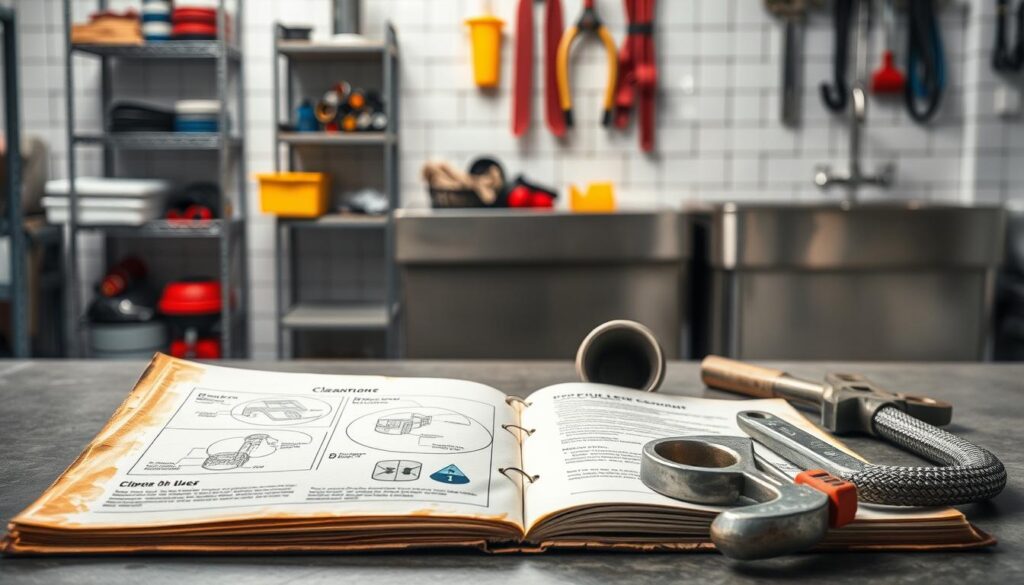
Dealing with cleanout issues can be tough for homeowners. Knowing common problems and how to fix them keeps your plumbing working well. Making sure your main line cleanout is installed right is key to avoiding problems.
Cleanout fittings do more than just give you access. You might face several common issues that need quick action:
- Stuck or damaged cleanout plugs
- Water leakage around cleanout connections
- Drainage performance interruptions
- Blockage and sediment accumulation
The slope of your drain line is very important. Incorrect slope can cause big problems. For drain pipes three inches or larger, aim for a quarter-inch drop per foot of horizontal pipe.
| Problem | Potential Cause | Recommended Action |
|---|---|---|
| Persistent Clogs | Improper pipe slope | Professional pipe realignment |
| Leaking Cleanout | Damaged seal or fitting | Replace cleanout plug or fitting |
| Restricted Flow | Debris accumulation | Professional cleaning or rodding |
If DIY fixes don’t work, you might need a pro. Plumbers with experience can find and fix complex cleanout issues.
Always get a pro’s opinion for ongoing or complex plumbing problems to avoid big damage.
Regular upkeep and quick action to warning signs can save you money. It keeps your plumbing system running smoothly and efficiently.
Modern Innovations in Cleanout Design
Plumbing technology keeps getting better, bringing new ideas to cleanout plumbing systems. These changes make it easier and more efficient for homeowners to take care of their plumbing. It’s all about making maintenance simpler.
Recently, cleanout pipe requirements have seen big improvements. Companies are creating smart solutions to old plumbing problems. These new approaches are smart and effective.
Smart Cleanout Systems
Today’s cleanout systems have cool tech features:
- Sensor-based monitoring for real-time pipe condition tracking
- Wireless connectivity for immediate problem alerts
- Digital diagnostic tools that provide detailed plumbing health reports
Advanced Materials
New materials are changing cleanout design:
- Corrosion-resistant composite materials
- Ultra-durable synthetic polymers
- Lightweight yet strong construction components
Installation Improvements
New installation methods make cleanout maintenance easier. Plumbers use precise tools and techniques. This means faster, more accurate installations with less disruption.
These advancements show how technology is improving cleanout plumbing systems. Homeowners get more reliable, efficient, and smart plumbing solutions.
Cost Considerations and Investment Value
Understanding the costs of plumbing cleanouts is key for homeowners. A plumbing cleanout is more than a cost. It’s a smart investment that saves money and prevents disasters.
When looking at the costs of installing a cleanout, several factors matter:
- Initial installation costs
- Material quality
- Professional versus DIY installation
- Long-term maintenance expenses
The cost to install a cleanout varies from $100 to $800. This depends on the complexity and where it’s located. Professionals charge $45 to $200 per hour for the job.
| Cleanout Type | Average Cost | Complexity |
|---|---|---|
| Basement Cleanout Valve | $250 – $500 | Medium |
| Standard Plumbing Cleanout | $100 – $300 | Low |
| Complex Access Point | $500 – $800 | High |
Pro tip: Investing in quality cleanouts can save you from expensive sewer repairs that cost thousands.
“A well-maintained cleanout is like an insurance policy for your home’s plumbing system.” – Professional Plumbing Association
Keeping records of plumbing work adds value to your home. It helps with future maintenance. By investing in cleanouts, you protect your home and may increase its value.
Conclusion
Cleanout plumbing is key but often ignored in homes. It’s like a secret door for your pipes, helping keep them clear. Knowing about cleanout fittings helps homeowners avoid big plumbing problems.
These access points are vital for your plumbing system. They help keep water flowing and stop blockages. With cleanout systems, plumbers and homeowners can fix issues fast. Learning about your cleanout spots can save you money and prevent damage.
Cleanout plumbing is not just a detail; it’s essential for home care. Regular checks, knowing your system, and when to call a pro are important. Being informed and proactive keeps your plumbing working well for years.
Start taking care of your home’s plumbing by learning about your cleanout system. Get a pro to inspect it, understand your plumbing, and plan for maintenance. This keeps your pipes running smoothly.
